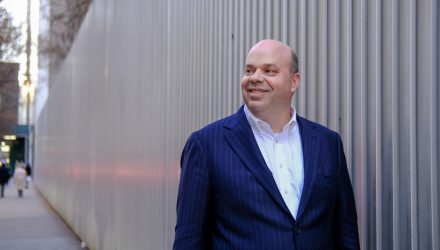The largest high yield bond ETFs have been out of favor for much of 2024. However, many advisors recently told VettaFi they think the style will perform best going forward.
In mid-April, VettaFi hosted a Fixed Income Symposium with more than 600 attendees. During the event, we asked advisors and investors some questions. One focused on “which fixed income investment style do you think will perform best in the next 12 months?”
While it was close, high yield corporate bonds (32%) barely edged out investment grade corporate bonds (31%). US Treasuries and mortgages and agency bonds also received votes during the poll.

Panelists during the symposium agreed. “I think we would probably lean towards high yield because the backdrop from an economic perspective continues to look quite favorable,” said Matthew Wrzesniewsky, Goldman Sachs Head of Investment Strategist Team.
ETF Flows Tell a Different Story
The sentiment data is in contrast with year-to-date flows. The two largest high yield bond ETFs – the iShares iBoxx $ High Yield Corporate Bond ETF (HYG) and the iShares Broad USD High Yield Corporate Bond ETF (USHY) – had a combined net outflows of $5 billion in 2024. In the last four weeks, redemptions accelerated.
With inflation remaining a concern, many advisors and investors believe the Federal Reserve will not be cutting interest rates this year. Nonetheless, investors have favored high yield bond ETFs that incur less interest rate risk.
The iShares 0-5 Year High Yield Corporate Bond ETF (SHYG) and the SPDR Bloomberg Short Term High Yield Bond ETF (SJNK) gathered $610 million and $440 million, respectively thus far in 2024.
With high yield bond ETFs, credit risk is primarily being incurred in exchange for nearly 8% yields. Indeed, HYG has an effective duration of just 3 1/3 years. However, investors have preferred SHYG and SJNK and its 2.4 and 2.3 years of duration.
Looking to Loans
There has also been demand for senior loan ETFs that offer high income but invest in floating rate bonds. The Invesco Senior Loan ETF (BKLN) has $1.0 billion of net inflows in 2024, while the SPDR Blackstone Senior Loan ETF (SRLN) pulled in $500 million.
Currently, there are no maturity specific high-yield bond ETFs available. However, in January BondBloxx set the stage for such products. They launched three-maturity focused ETFs that invest solely in BBB bonds, the lowest rating category of investment grade. The BondBloxx BBB Rated 1-5 Year Corporate Bond ETF (BBBS) takes on the least rate risk of the three but there are also intermediate- and long-term alternatives.
As investors become more targeted with their fixed income outlook, we expect ETF innovations to follow closely behind.
For more news, information, and analysis, visit Vettafi | ETF Trends.

